Do Costa Rican rose summer coffee beans taste good? are rose summer mixed coffee beans individual coffee beans?
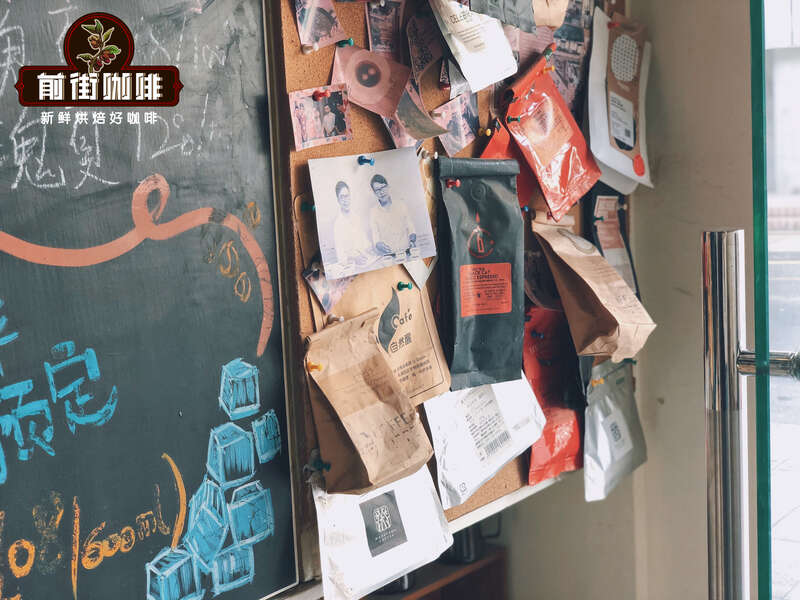
Professional coffee knowledge exchange more coffee bean information please follow the coffee workshop (Wechat official account cafe_style)
When it comes to rosy summer coffee, people can't help thinking of Panamanian rosy summer coffee beans. But Panama's rose summer coffee is introduced through neighboring Costa Rica, so what are the different characteristics of the two countries' rose summer coffee? Qianjie Coffee to compare the rosy summer coffee in the two producing areas.
Rosa was discovered in the rose forests of Ethiopia in 1931 and later sent to the Coffee Institute in Kenya, introduced to Uganda and Tanzania in 1936 and Costa Rica in 1953. Rosa coffee was introduced from Costa Rica to Panama by Don Pachi Serracin in 1963. Because the yield is not high, it directly affects the harvest, and the coffee farmers are not willing to plant it.
Until Daniel Peterson, the owner of the Panama La Esmeralda Manor in Panama, accidentally found that the coffee beans produced by the rosy summer coffee tree, which was originally used as a windbreak at the top of his coffee estate, actually had the unique citrus and flower flavor of African beans, so he separated his coffee beans and took part in the 2004 Panama Coffee Bean Cup Test Competition and became a hit. Rose Xiadou has been unstoppable since then, and has won the Panamanian coffee cup test competition for many years. In the eyes of boutique coffee lovers all over the world, Rosa coffee beans are undoubtedly the supreme treasure. So, what about the last stop in Costa Rica, which is famous all over the world?
Rose summer combination of Milasu Manor in Costa Rica
Producing area: Tarazhu, Costa Rica
Manor: Milasu Manor
Altitude: 1700m
Varieties: Rosa, ET47, SL28, MAICO
Treatment method: raisin honey treatment
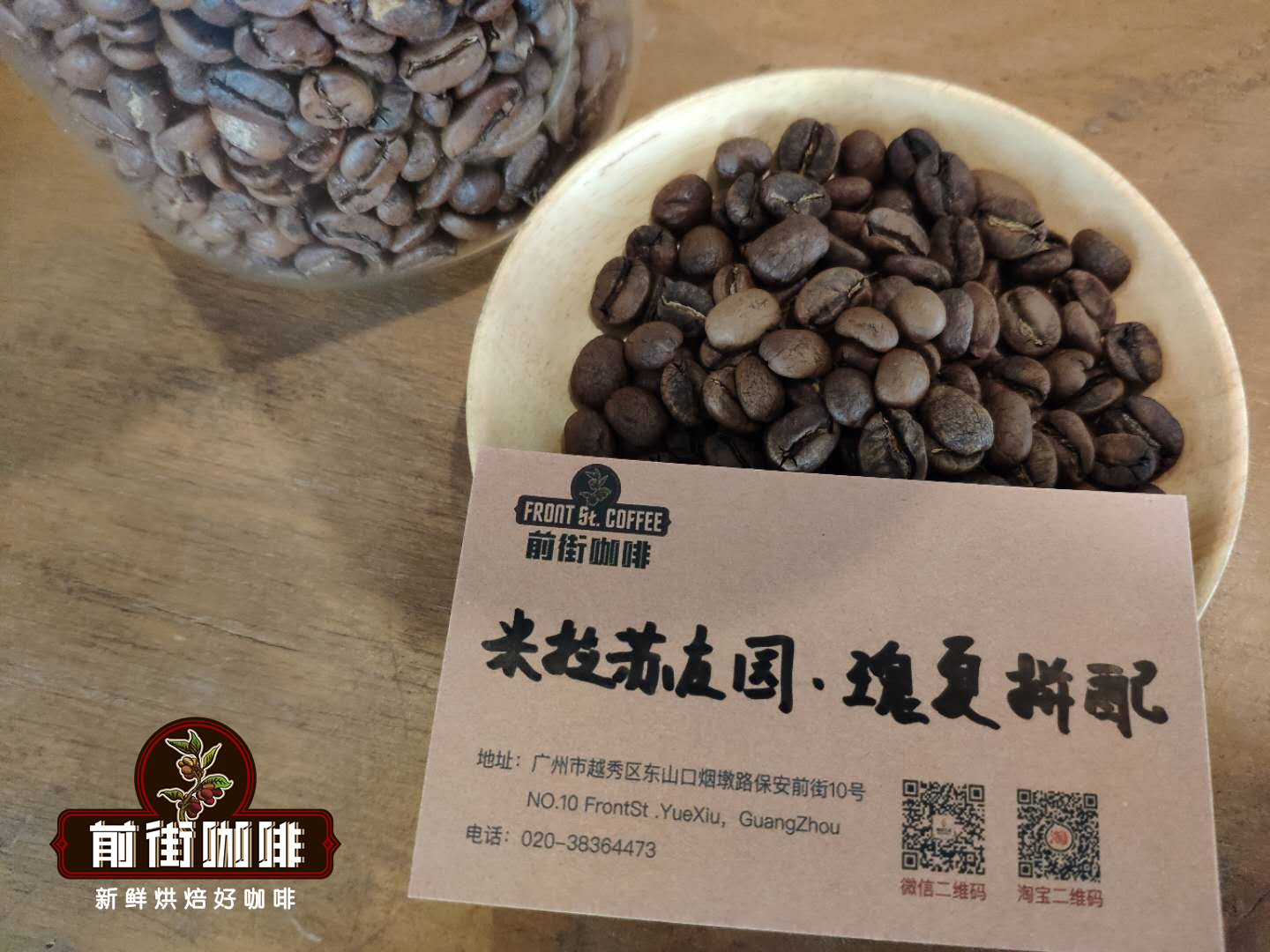
Milasu Manor is located in the Tarazu producing area of Costa Rican boutique coffee. Tarazhu producing area is located in the fertile volcanic region of Central America, which has a humid climate and fertile volcanic soil, abundant rainfall throughout the year, high altitude, and dense forest natural shade, which provides a unique growth environment for coffee growth. Although many coffee farm beans are built in the Tarazu producing area, some of the micro-climate, soil and variety differences that exist in each estate will be quite complete. The magic given by nature is what attracts Qianjie to keep looking for different coffee beans in the same producing area for comparison.
Esteban Sanches, the owner of the farm, graduated from the coffee department of the Agricultural University of Costa Rica, which can be said to have a professional background. At the same time, he is also a person with a very strong spirit of scientific experiment. On the one hand, the manor tried to grow varieties such as ET47 Ethiopian native species and tried various treatment methods, on the other hand, the small wet treatment machine of the manor treatment plant was designed and assembled by Esteban Sanches himself.
Coffee bean variety
Geisha 、 ET47,SL28 、 Maico
Geisha believes that everyone is no stranger to this breed. The rose variety was first collected from the coffee forest of Ethiopia in the 1930s. It was taken to the Center for Tropical Agricultural Research (CATIE) in Central America in 1953, where it was recorded as joining T2722. However, the branches of this plant are easily broken and are not popular with farmers, so they are not widely planted.
In the 1990s, the Costa Rican Coffee Institute introduced many trees to farmers in the Tarazu region as research species to prevent leaf rust. ET47 number 47 in the laboratory, because many varieties were introduced in the same period, most of them use numbers to distinguish and identify. The owner Esteban Sanche got ET47 and began to study this coffee variety, which can be said to be a complex complex that carries many excellent flavors, such as the sweetness of the fruit, the roundness, cleanliness, elegance and acidity of the taste.

SL28 according to historical documents, senior coffee officials at the Scott Laboratory (A.D. Trench) have noticed a variety that seems to be tolerant to drought, disease and pests in Modi, Tanzania. The seed was collected and taken back to Scott's laboratory, where its drought resistance was confirmed. In recent years, genetic tests have also confirmed that SL28 belongs to the bourbon gene group, so the shape of SL28 coffee beans is also similar to the round and thick shape of bourbon varieties.
Maico has no official information about this variety at the moment. The coffee bean introduced by Qianjie Coffee is composed of 50% rosette coffee beans and a mixture of 50%ET47, SL28 and MAICO. Rose coffee beans will provide this coffee with the aroma of jasmine, while other varieties will enhance the flavor of strawberries and sweeten the coffee through the treatment of raisin honey.
Treatment mode
Raisin honey treatment is to retain 100% pectin and zero water treatment, which increases the difficulty of honey processing, which requires strict control of time. The garden owner will first screen the harvested coffee fruit, put the selected coffee fruit on an elevated bed to dry for at least three days, and then remove the peel. What is interesting is that the peeling machine developed by the owner himself is different from others. It can handle two different kinds of beans at one time.
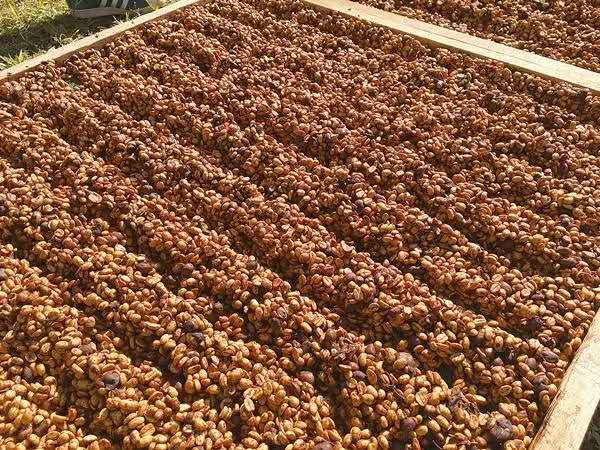
Remove the pericarp and retain the pectin before drying. At this stage, climate factors are the key to the success of honey treatment. In the drying process, keep turning these coffee beans to make the drying uniform, but to grasp the frequency of turning, to dry slowly to ensure that the coffee is fermented, but not so slow that excessive fermentation occurs. Qianjie coffee through the cup test found that raisin honey treatment after retaining 100% pectin for the sun, the coffee flavor is full of sweetness, but also with a kind of preserved fruit fermentation sweet.

Roasting Analysis of Qianjie Coffee
Due to the blending of four kinds of beans and the treatment of raisin honey, Qianjie roasters found that the fermentation degree of roses was significantly lower than that of the other three kinds of beans. After three different curves of baking, although the general flavor can be shown, but Qianjie roasters still think that it is not clear and bright. So through several fine-tuning, in the firepower to ensure the stable transmission of heat, in the development period of the use of fire to gather heat, energy storage to open the throttle to the performance of the bean.
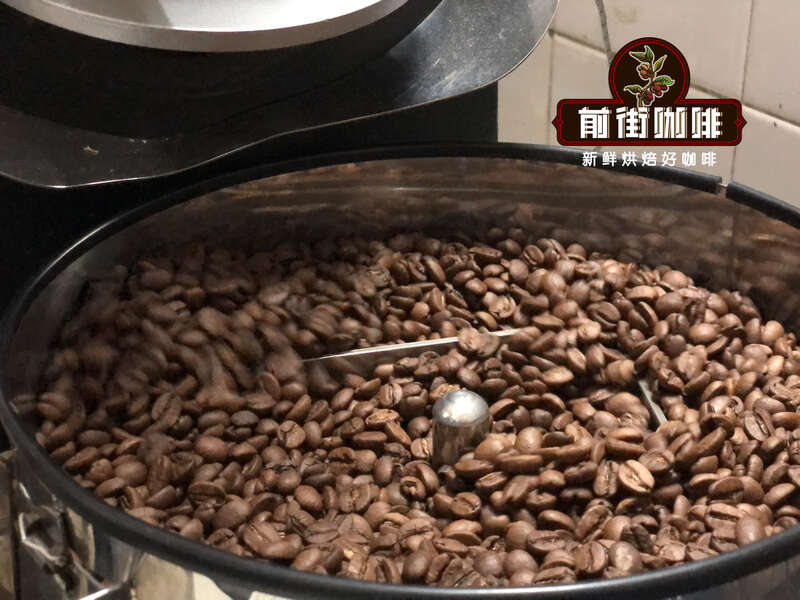
Yangjia 800N, bean dosage: 480g. The furnace temperature is preheated to 200℃ and cooled to 175℃ to enter the pot, the firepower is adjusted to 120,the throttle is open to 3, and the return point is 39,32 ". Keep the firepower; at 114℃, the throttle is open to 4.
The smell of grass turns yellow and the smell of grass disappears and enters the dehydration stage. At 140℃, the firepower is lowered to 100, and the throttle is kept at 4.9mm. After dehydration, there are wrinkles and black markings on the bean surface, and the smell of toast changes to coffee, which is a prelude to an explosion. When the air door is fully open, the firepower remains the same. The development time after the explosion is 30 minutes after the explosion, and the pot is put into the pot at 193.5 ℃.
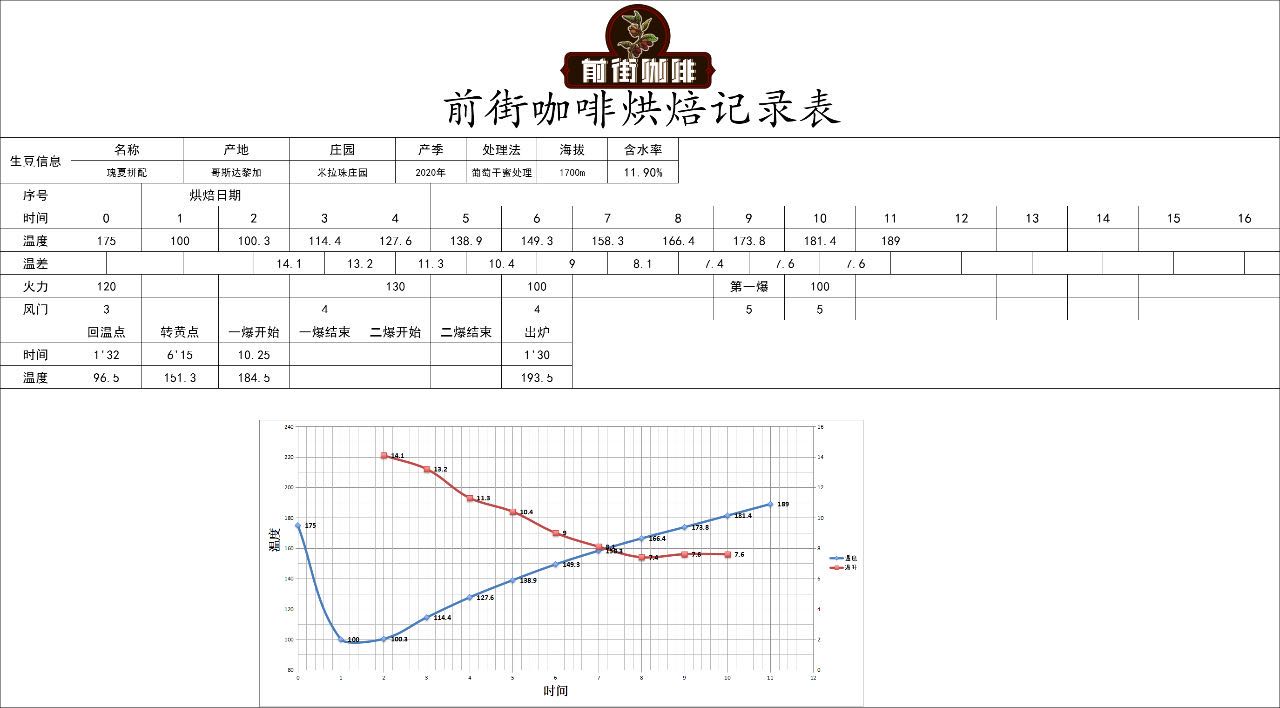
Coffee cup test report on Qianjie
Qianjie coffee cup test will be carried out within 8-24 small baked coffee beans, using ceramic 200ml cup test bowl, antistatic metal standard cup test spoon, cup water temperature of 94 °. The grindability of cup coffee powder is controlled to 20 standard sieve (0.85 mm), and the passing rate is 70%, 75%. The ratio is 18.18 (11.1 grams of coffee powder plus 200 milliliters of hot water), so that the concentration of the extract is just within the range of 1.15% Murray 1.35% gold cup. First grind and smell the dried incense, then fill the bowl with water. Confirm the wet incense, break the residue and pick up the residue after 4 minutes to taste the flavor.
Dry fragrance: flower fragrance
Wet fragrance: dried fruit, berries
Flavor: raisins, berries, nuts, cream
Suggestion on brewing coffee in Qianjie
Filter cup: V60001
Powder content: 15g
Powder / water ratio: 1:15
Water temperature: 90 °C
Degree of grinding: medium and fine grinding (Chinese standard No. 20 screen pass rate 80%)
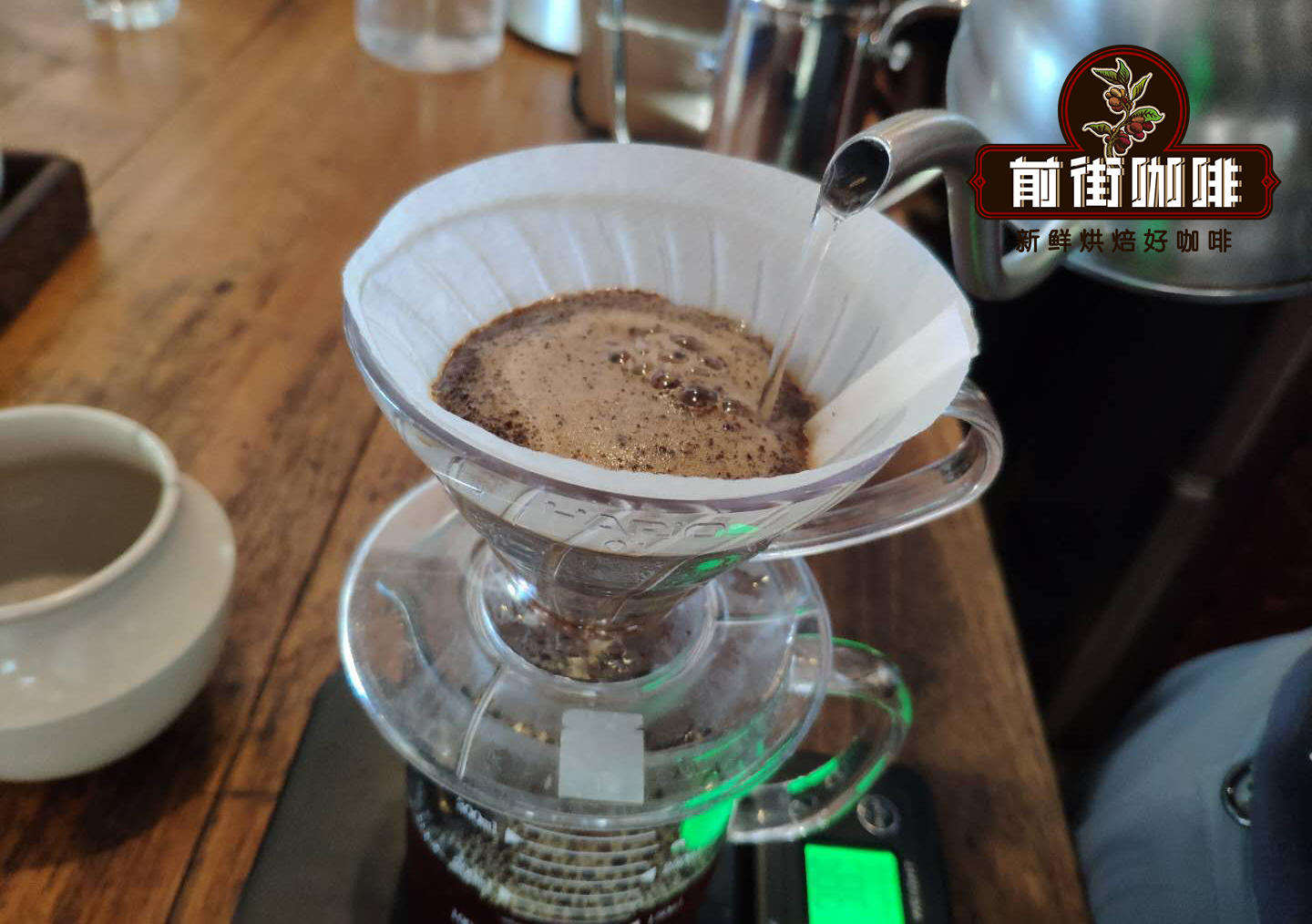
The front street cooking technique: first wet the filter paper and preheat the filter cup and the coffee pot. Steam with 30 grams of water for 30 seconds, small water flow around the circle to 125 grams for sectional injection, water level drop is about to expose the powder bed, continue to inject water to 225 grams to stop injection, and so on when the water level drop is about to expose the powder bed, remove the filter cup, (steaming starts timing) the extraction time is 2 minutes 39 percent 01 ".
Cooking flavor: the aroma of jasmine, the sweet flavor of imported raisins, the sweetness of strawberry fudge, the creamy taste of nuts.
For more boutique coffee beans, please add private Qianjie coffee on Wechat. WeChat account: kaixinguoguo0925
Important Notice :
前街咖啡 FrontStreet Coffee has moved to new addredd:
FrontStreet Coffee Address: 315,Donghua East Road,GuangZhou
Tel:020 38364473
- Prev
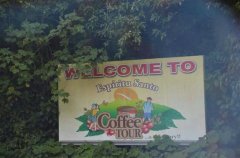
Introduction to the flavor characteristics of Brazilian Sandoz coffee, the most famous brand of Brazilian coffee
For the exchange of professional baristas, please follow the coffee workshop (Wechat official account cafe_style) Brazil Brasil Brazil is the largest coffee producer, providing nearly 45% of the world's raw coffee beans. The length of the country's dry season may even affect coffee prices around the world. The main producing areas in Brazil are Minas Gerais Minas Gerais, Sao Paulo Sao Paulo and Bahia Ba.
- Next
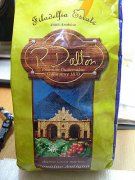
Evaluation of the four most common coffee brands in Guatemala
Professional barista communication Please follow the coffee workshop (Wechat official account cafe_style) when you come to Guatemala, what you can't help but taste is Guatemalan coffee. I always wanted to write a special topic to introduce it, but I always felt that I just got here, so I should try it before I decide to write those brands. After a while of public inspection and covert interview, I probably chose four brands to share with you!
Related
- Detailed explanation of Jadeite planting Land in Panamanian Jadeite Manor introduction to the grading system of Jadeite competitive bidding, Red bid, Green bid and Rose Summer
- Story of Coffee planting in Brenka region of Costa Rica Stonehenge Manor anaerobic heavy honey treatment of flavor mouth
- What's on the barrel of Blue Mountain Coffee beans?
- Can American coffee also pull flowers? How to use hot American style to pull out a good-looking pattern?
- Can you make a cold extract with coffee beans? What is the right proportion for cold-extracted coffee formula?
- Indonesian PWN Gold Mandrine Coffee Origin Features Flavor How to Chong? Mandolin coffee is American.
- A brief introduction to the flavor characteristics of Brazilian yellow bourbon coffee beans
- What is the effect of different water quality on the flavor of cold-extracted coffee? What kind of water is best for brewing coffee?
- Why do you think of Rose Summer whenever you mention Panamanian coffee?
- Introduction to the characteristics of authentic blue mountain coffee bean producing areas? What is the CIB Coffee Authority in Jamaica?

